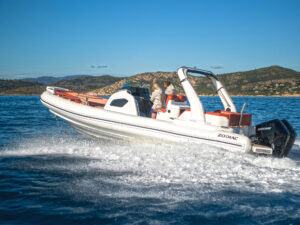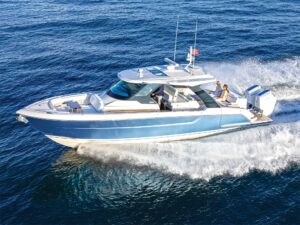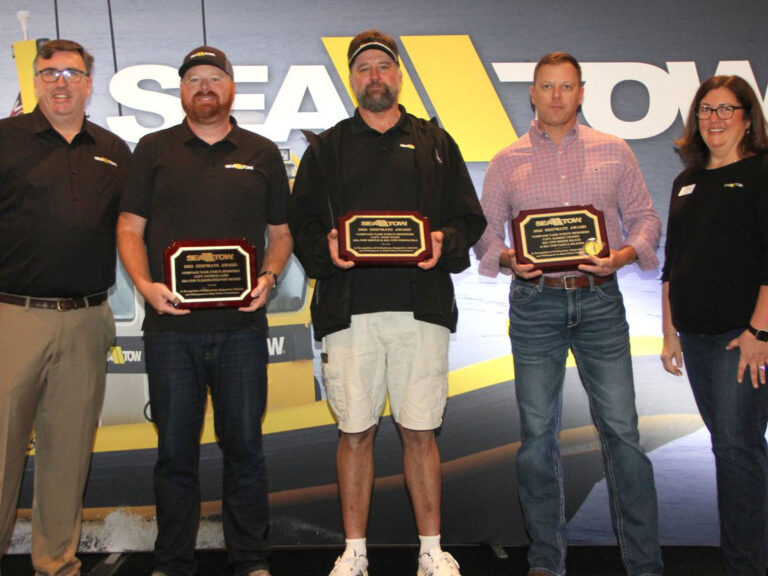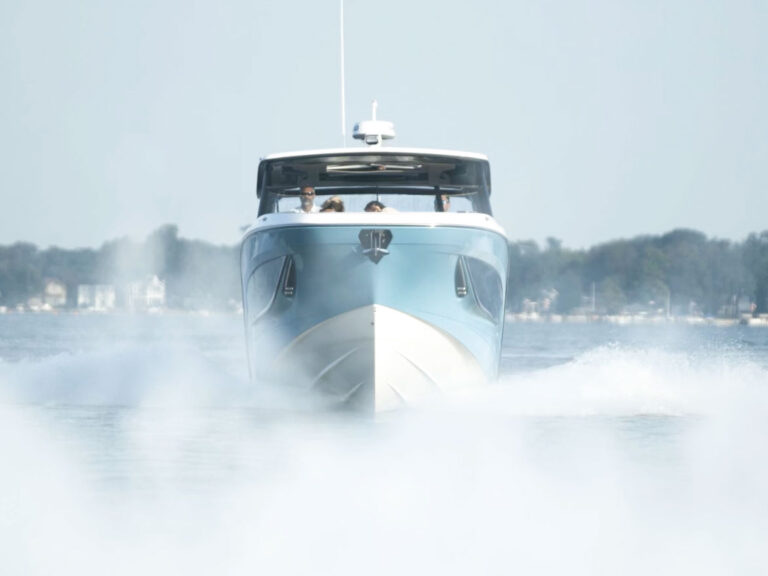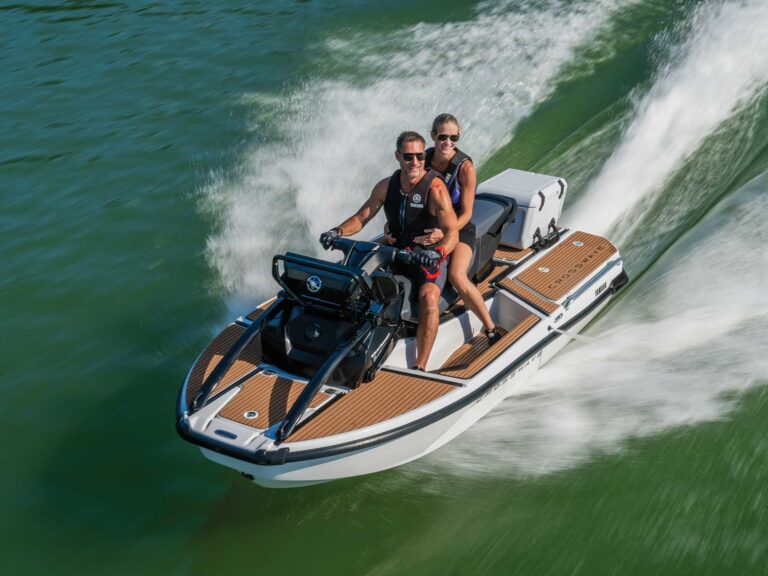There are few companies that produce a product or service that truly innovates in the realm of recreational boating. To be fair, powerboating is a mature activity, almost 200 years old. By now, it’s mostly about evolution, not revolution. So, awarding a Marine Power Innovation Award is not done lightly.
But Sharrow Marine Propellers impressed us.
By now, you may be familiar with the odd-looking propellers that look like their blades have been hollowed out, and the tips folded and rounded to nubs. These would be the MX propellers from Sharrow Marine, a Michigan-based company that claims this innovative design improves your boat’s efficiency, handling and noise output. To verify these claims, we decided to pit a pair of Sharrow MX3 propellers against comparable-size traditional stainless-steel propellers. Here’s what we found.
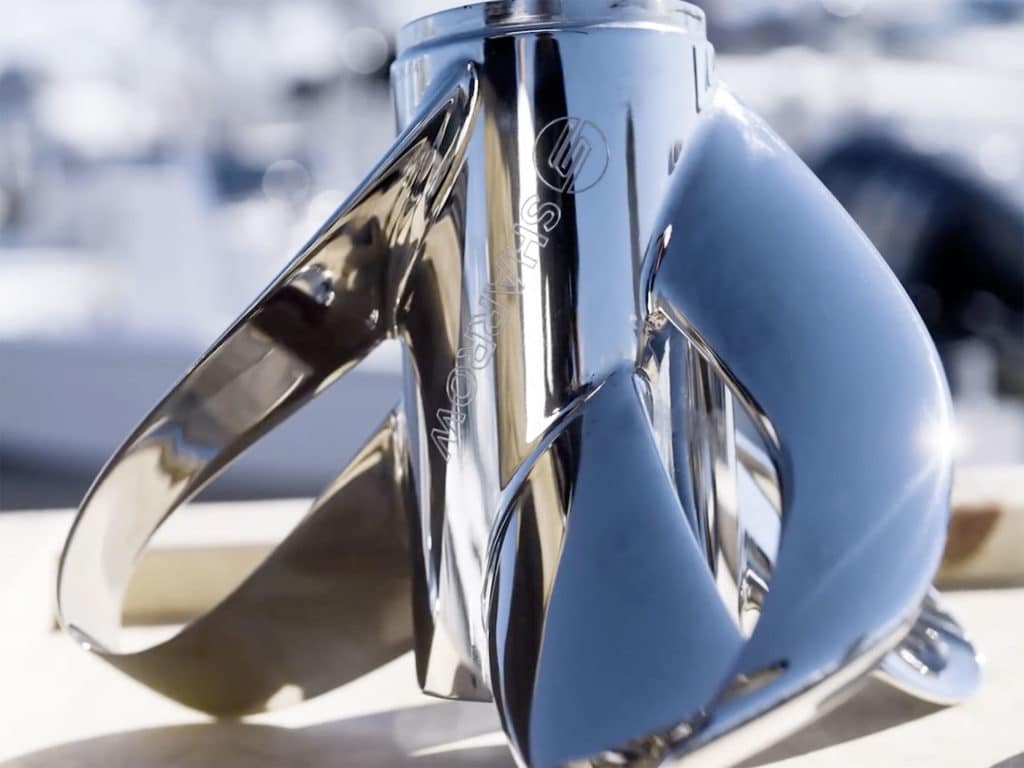
On test day, we ran our typical data on a Robalo R302 center-console powered by twin Yamaha F300 outboards. First, we ran the numbers with traditional three-blade 15-by-19-inch stainless-steel propellers. Then we went back to the dock and swapped them out for 15-by-19-inch three-blade stainless-steel Sharrow MX3 propellers. Running both sets of props with an identical fuel load and crew weight, we found that the Sharrow props helped the Robalo plane about a second faster than the traditional ones, and it hit 30 mph about a half-second quicker.
Just by looking at the performance numbers, you can see that the Sharrow MX3 props shined at 3,000 rpm. With the Sharrows, we could easily attain a cruising speed of 27.1 mph while recording noise levels of 80 dB(A) at the helm. With the traditional props, we struggled to stay on plane while recording a speed of 14.3 mph and an 85 dB(A) reading.
What the numbers don’t show is how well-connected to the water I felt while handling the boat at the helm, from idle speed to top-end. The boat felt much smoother climbing onto plane and didn’t slip or cavitate during hard-over turns at 30 mph. The boat also felt more responsive at the dock, comparable to the difference between a sterndrive with dual contra-rotating propellers and a single prop.
Sharrow achieved this through the blade design, essentially eliminating the vortices that swirl off the blade tips of traditional props and lead to drag, cavitation and increased vibration. There’s a more complex scientific explanation, but the gist of it is that when you replace your regular props with Sharrows, you will notice the difference.



